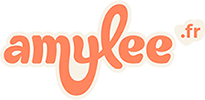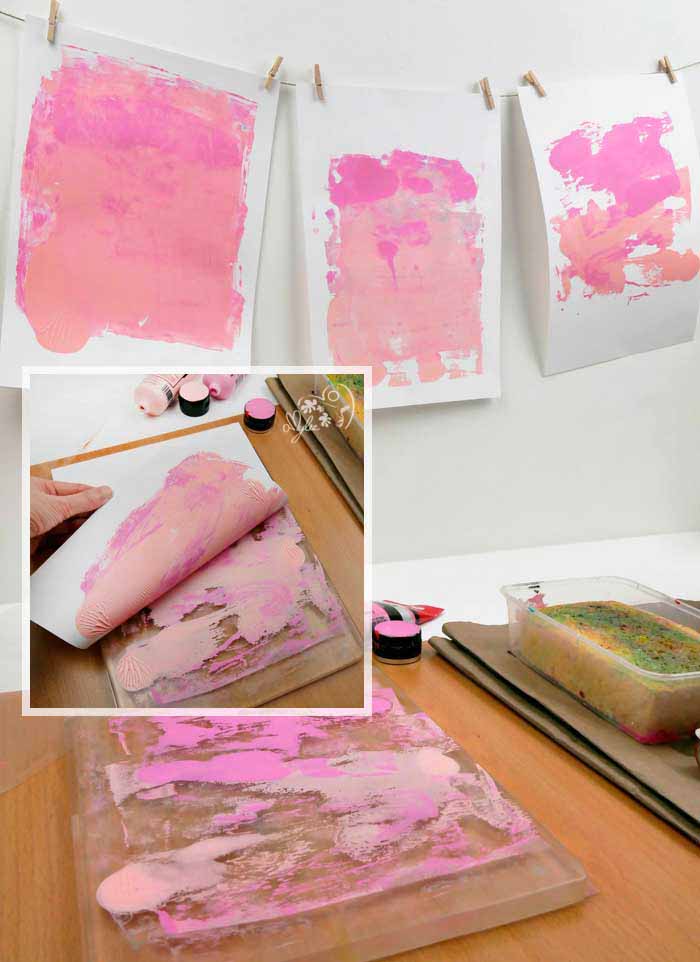Do you like colours? Are you looking for ways to improve your creativity? Do you want to test new or alternative processes? You’re in the right place then!
In this post, I invite you to discover a printing technique inspired by the monotype process. This process provides great prints without a press. With Gelli Print, it’s easy, efficient and fun to create! Your ideas can be expressed in many different ways. Let’s talk about the basics that you need to start with.
.
Gelli Printing Plate
Item specifics: It is a flexible plate made of a thick single layer of gelatin, a plastic material which contains mineral oil. This plate is stable and reusable if it is cleaned after each use. The goal is to keep the sticky side of the plate to facilitate printing.
.
Material
The materials can be found on GreatArt.co.uk
- 1 Gelli Plate (available in several sizes) – GreatArt CODE 35206
- Ink roller (hard rubber ink roller for block printing inks or paints)
- Acrylic paint colours in tubes
- Bristol board paper (fabrics works well too)
- Sheets of paper, 1 pencil, 1 pair of scissors
- 1 basin + hotwater, 2 sponges, soap
NOTICE :
Paints, inks for fabrics or printing inks are also compatible with these plates. Avoid dyes because they may stain the gelatin.
.
Make Your Own Stencils
But before moving on to colours, I make small paper stencils: flowers and a pretty “white” flamingo! Useful stencils for the second part of this tutorial.
.
My Workstation
How to make your own Art Print?
– STEP 1 | Pink flamingo background layer –
.
Printing Plate #1
MATERIAL: Gelli plate, paint tubes (Pink) and roller.
After releasing your plate from its clamshell package, place it on a clean, flat surface.
- Remove the protective film
- Apply blobs of colour in the middle of the plate.
- Pass the roller over and cover whole plate
NOTICE :
I keep the plastic film under the plate. This allows me to maintain the other part of the plate and above all to prevent the gelatin having direct contact with the surface of my table.
.
Printing #1: Background Layer
MATERIAL: Bristol board paper
Before the paint dries on the plate:
- Put the Bristol board paper on the painting plate.
- Press firmly on the entire surface of the paper with your hands.
- Peel and remove the sheet from the plate.
- Discover the colourful pink print on the sheet. Wow, I love it!
- Repeat while there is still paint on the plate.
- Hang bristol board paper with fresh print on a string or lay them flat. Let them dry completely. Here, we have created the first print which will be used for the colour of my flamingo.
- NOTICE : It all depends on the amount of paint applied to the plate. Full of paint, it can give up to 3 different prints. The original print is followed by ghost printing. The 2 ghost prints leave reduced painting marks on paper with very interesting effects.
.
EASY CLEAN UP
MATERIAL: basin of hot water and soap.
- I recommend washing the roller between each change of colour. The hot water and soap allow you to peel the paint off the brayer.
- Then I wipe my brayer using a slightly wet sponge. And voilà, my roller is ready!
- Personally, I usually clean my Gelli plate between 2 prints to keep it sticky, but some residues can create great effects.
- Hot water and soap facilitate remove the paint from the plate.
- Then I wipe my Gelli plate with a big wet sponge (sponges leave fewer residues than rags or paper towels). And now, my plate is ready!.
How to make your own Art Print?
– STEP 2| Sky & Sea layer –
Printing Plate #2: Foreground Layer
MATERIAL: Gelli plate, paint tubes (Blue), and roller
- Apply a few blobs of colour in the middle of the Gelli plate.
- Pass the roller over and cover the entire plate.
.
Stencils and Printing #2:
MATERIAL: Stencils and pink prints on Bristol board paper (perfectly dry).
- Place the stencils on the blue painted plate.
- Make sure you the first print is perfectly dry (the pink one). Apply the pink printed Bristol board paper onto the fresh blue painting plate.
- Press firmly on the entire surface of the paper with your hand.
- Peel and remove the sheet from the plate.
 Results
Results
And now, pink and blue come together nicely to make a fun pink flamingo in the sea!
I hope you enjoyed this process and got inspired! If you are stuck for ideas, there are many videos explaining the methods of Gelli Printing. Do not hesitate to go streaming on YouTube! Happy Printing!
Vous êtes actuellement en train de consulter le contenu d’un espace réservé de YouTube. Pour accéder au contenu réel, cliquez sur le bouton ci-dessous. Veuillez noter que ce faisant, des données seront partagées avec des providers tiers.
.
GOOD TO KNOW:
- The Gelli plate will lose its transparency to become dull and cloudy, but its features remain unchanged.
- After final use, always clean the plate before storing.
- Keep the plastic films making sure they’re placed on the plate during storage. Dampen the plate, apply the film, push the air and water to the edge with a ruler and you will avoid distortions caused by large bubbles.
- Avoid trapping dust residues between the film and the gelatin plate.
- The clamshell package is designed to store the plate. It can also be stored on a smooth plate or on a sheet of glass / Perspex.
- Keep the flat plate on a smooth and clean surface.
- Some pigments may stain the material. Stains can be removed by following the recommended cleaning instructions for oil painting. Always do a test first in a corner of the plate.
- Do not use sharp tools such as pencils or toothpicks. They can scratch the surface and leave permanent marks.
- Experiment with painting accessories like plastic or silicone knives.
DISCLAIMER : cet article est une collaboration sponsorisée. Je fais partie des artistes référents qui utilisent le matériel proposé par Le Géant Des Beaux-Arts – France et GreatArt – United Kingdom. Vous venez de lire mon article issu de cette collaboration. Au risque de me répéter, sachez que j’apprécie les marques distribuées par ce partenaire depuis des années, et que je suis convaincue de la qualité du matériel destiné aux artistes et aux personnes créatives. Même si cela paraît logique, je précise que je suis LIBRE sur la thématique et le choix des produits mis en avant, LIBRE sur le contenu, LIBRE de donner mon VÉRITABLE avis, et c’est également pour cette raison que ce partenariat est important car je peux donner libre cours à mon imagination et ainsi proposer du contenu frais et de qualité.















 Results
Results



